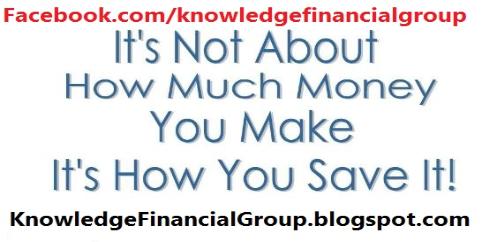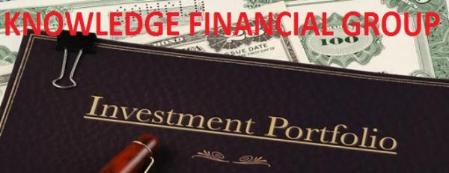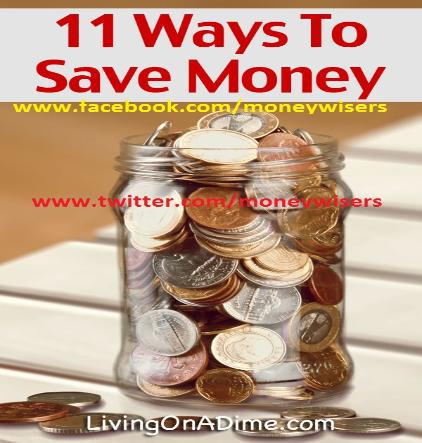| Would you like to: •How To Save money by minimizing on interest and fees and capitalizing on investint •Pay off your home sooner than expected •Relieve financial stress Would you like to: •Have the best lifestyle your money can buy - •Build financial security for your family - •Be sure your have the best loan products available at your disposition - Would you like to: •Be sure you will have a happy, financially secure retirement - •Be able to help your children, your grand children - |
'' OUR MISSION // '' OUR VISION // '' OUR VALUE // '' OUR EXPECTATION // '' SUCCESS STATEMENT //
| KNOWLEDGE FINANCIAL GROUP / KNOWLEDGEFINANCIALGROUP.COM |


| Frugal Living Essentials... Frugal Living 101 Jumping into the frugal life means learning how to budget, cut costs, reduce debts and get organized Ways You Can Start Living the Frugal Life The Frugal Life - Living Well With What You Have.. Welcome to The Frugal Life Community! Now that you’re visiting our community, relax and spend some time enjoying the website, the blogs, the social media pages. Get ideas for more creativity in your finances and meet a community of making more - saving more - |

| Spending Less And Save More.. Compound Interest…Friends? When asked, "What do you consider mankind’s greatest discovery?", Albert Einstein replied, "Compound interest!" " When it’s working against you, it’s a beast! If we take the time to understand the compound interest formula, we can see how to defeat economic difficulties. Compound interest can make certain people get richer and at the same time it's making certain other people getting poorer. Reasons to Check Your Credit Report Regularly In much the same way that a resume displays your work experience to a prospective employer, a credit report provides prospective creditors (and in some cases employers and insurers too) with a detailed picture of your credit history. And like a resume, your credit report can influence whether you will receive what you are applying Your Secret To Success Your Secret To Success By Doris Dobkins Have you ever wondered what the secret ingredient is to success and financial independence? I know I have. I’ve also discovered it and want to share it with you in this article. The most successful and financially independent people are goal- oriented. They clearly define their goals |
| Who We Are Do you wish you had more time and money? Many of us do! That's what MONEY WISERS GROUP is all about. We've spent years digging out all the ways that you can "live better...for less". What Can We Do For You? On our website you'll find full articles, slideshows and videos on hundreds of ways to stretch your day and your dollar. There are over MANY articles in our library. And we're adding more every day Each weekly issue of MONEY WISERS GROUP includes links to a variety of articles and tips to help you live better for less Talk to us. Almost every article invites you to send feedback to the editor. Do so. If you have a question ask for help with an email to Ask The Dollar Stretcher. Have a suggestion? Send it on in Tell your friends about us. We all know someone who is struggling with their finances. You'll be doing them a favor if you tell them about our site. They have nothing to lose and what they learn at MONEY WISERS GROUP |
Living frugal isn't a choice
for us, it's a necessity. Here at
MONEY WISERS GROUP I will always
share with you my best frugal living tips
and tricks! If you ever have any frugal
living tips of your own that you'd love to
share with US
Living a Frugal Lifestyle
Try these easy frugal living tips to help
you save money and get out of debt! Trim
unnecessary spending and you'll be
surprised how far your money
Ways To Save Money –
Frugal Living Tips
Frugal living is all about making the most
with what you already have. Here are 11
frugal living tips from Penny Pinching
Mama to help you get started:
for us, it's a necessity. Here at
MONEY WISERS GROUP I will always
share with you my best frugal living tips
and tricks! If you ever have any frugal
living tips of your own that you'd love to
share with US
Living a Frugal Lifestyle
Try these easy frugal living tips to help
you save money and get out of debt! Trim
unnecessary spending and you'll be
surprised how far your money
Ways To Save Money –
Frugal Living Tips
Frugal living is all about making the most
with what you already have. Here are 11
frugal living tips from Penny Pinching
Mama to help you get started:
There are many financial ideas
very common to the wealthy and
super wealthy but generally not
accessible to regular investors.
Money Wisers Group will teach
you all, everything.
The main objective of Money Wisers Group is to
further explain and expand the ideas, applying
lessons learn previously and more importantly to give
people a new perspective and more control over their
finances.
Perhaps you entrusted your financial security to the so
called experts, they are getting paid whether you lose
or gain.
It’s not good at all to let yourself get suckered again
and again, it may be now the time to take control of
your finances, take control of your retirement affaire.
Money Wiser Group is there to help everyone who has
the desire to become financially independent and
obtaining economic freedom.
Money Wisers are just a guide designed to empower
others, a guide to help others become rich, staying
rich in a good time and in bad time with the guidance
of few financial planners, financial advisors, financial
analyst, and investment strategists. Those people are
saying that it’s time for wiser people to take charge of
their own financial future.
Money Wisers social media network is a
comprehensive, easy to understand and use to
maximize your portfolio and focusing on improving
cash-flow while reducing taxes and maximizing assets,
minimizing liabilities.
Money Wisers Explain Tangible income- tangible
investment; for most people their wealth comes from
tangible investments include real estate holdings,
businesses build from the ground up, a product they
created and sold, oil and gas royalties, and so on. In
reality their wealth is not really comes from the stock
market which is a gambling environment.
MONEY WISERS GROUP wants you to freeing your
estate from conventional thinking. An example, if you
purchase a home with leverage money and have a
mortgage for 30 years fix interest rate
And you just send an extra payment of even about 100
dollar regularly on the principal; Money Wisers Group
guarantees you that you will finish to pay your property
earlier, and save thousands and thousands of dollars
on interest you suppose to pay.
very common to the wealthy and
super wealthy but generally not
accessible to regular investors.
Money Wisers Group will teach
you all, everything.
The main objective of Money Wisers Group is to
further explain and expand the ideas, applying
lessons learn previously and more importantly to give
people a new perspective and more control over their
finances.
Perhaps you entrusted your financial security to the so
called experts, they are getting paid whether you lose
or gain.
It’s not good at all to let yourself get suckered again
and again, it may be now the time to take control of
your finances, take control of your retirement affaire.
Money Wiser Group is there to help everyone who has
the desire to become financially independent and
obtaining economic freedom.
Money Wisers are just a guide designed to empower
others, a guide to help others become rich, staying
rich in a good time and in bad time with the guidance
of few financial planners, financial advisors, financial
analyst, and investment strategists. Those people are
saying that it’s time for wiser people to take charge of
their own financial future.
Money Wisers social media network is a
comprehensive, easy to understand and use to
maximize your portfolio and focusing on improving
cash-flow while reducing taxes and maximizing assets,
minimizing liabilities.
Money Wisers Explain Tangible income- tangible
investment; for most people their wealth comes from
tangible investments include real estate holdings,
businesses build from the ground up, a product they
created and sold, oil and gas royalties, and so on. In
reality their wealth is not really comes from the stock
market which is a gambling environment.
MONEY WISERS GROUP wants you to freeing your
estate from conventional thinking. An example, if you
purchase a home with leverage money and have a
mortgage for 30 years fix interest rate
And you just send an extra payment of even about 100
dollar regularly on the principal; Money Wisers Group
guarantees you that you will finish to pay your property
earlier, and save thousands and thousands of dollars
on interest you suppose to pay.
Living frugal - Have a frugal
lifestyle and invest to build
wealth. How to invest - What to
invest in - When to invest???
lifestyle and invest to build
wealth. How to invest - What to
invest in - When to invest???
| This website. specially this page is designed for investors - entrepreneurs - Traders - Business Oriented people. Here's millionaire sharing secrets to succeed and win big in the world investing.. There are no secrets to investment success.. But there is hard work, a solid plan, due diligence, research that fits each individual financial goals and certainly their risk tolerance... |
What is bond? How to invest in
bonds? What type of bonds are out
there?
Government bonds - corporate
bonds - municipal bonds -
Safety: Money market funds,
Certificate of Deposit...
Treasury securities: Treasury bills -
Treasury notes - Treasury bonds
bonds? What type of bonds are out
there?
Government bonds - corporate
bonds - municipal bonds -
Safety: Money market funds,
Certificate of Deposit...
Treasury securities: Treasury bills -
Treasury notes - Treasury bonds
| Stocks Investing: Stock Market Different Sectors... Different Class Of Stocks.. Real Estate Sector - Pharmaceutical - Retail - Utility - Transportation - Energy - Automobile - Communication - Financial Sector etc. How to Invest in Stocks??? The Complete Beginner's Guide to Investing in Stock and it provides a short checklist of topics, complete with links and much more.. |
| '' Knowledge Center '' '' Financial Service '' '' Resource Center '' '' Financial Group '' '' Banking And Finance '' '' Investing Basic '' '''' How To Buy And Sell Stocks '' '' How To Buy And Sell Securities & HedgeFund' '' '' How To Buy And Sell Bonds '' '' How To Buy And Sell Index Funds'' '' How To Buy And Sell Tax Liens & Tax Deeds '' '' How To Buy And Sell Options '' '' How To Buy And Sell Mutual Funds '' '' How To Buy And Sell Municipal Bonds '' '' How To Buy And Sell REIT's '' '' How To Buy And Sell Real Estate '' ''/- Options & Futures Contracts /=/ ''Investment Account Knowledge'' = Exchange Traded Fund {ETF’s} '' '' Wall Street Market Millionaire '' '' 101 Ways To Make Money '' '' Retirement Planning '' '' IRA's - 401k's - Pension Plan '' '' Life Insurance '' '' Business Start Up '' '' Business Blogs '' '' Investing Blogs''' '' Financial Blogs'' '' Financial Literacy '' '' Money Management '' '' American Dollar '' '' Millionaire Mind Set '' '' Earned Income'' '' Passive Income '' |
Bonds: Investing in
bonds; How to invest in
bonds?
Companies and governments issue
bonds to fund their day-to-day
operations or to finance specific
projects. When you buy a bond, you
are loaning your money for a certain
period of time to the issuer..
In exchange, the borrower promises
to pay you interest every year and to
return your principal at "maturity,"
when the loan comes due, or at "call"
if the bond is of the type that can be
called earlier than its maturity. The
length of time to maturity is called the
"term."
A bond's face value, or price at issue,
is known as its "par value." Its
interest payment is known as its
"coupon."
bonds; How to invest in
bonds?
Companies and governments issue
bonds to fund their day-to-day
operations or to finance specific
projects. When you buy a bond, you
are loaning your money for a certain
period of time to the issuer..
In exchange, the borrower promises
to pay you interest every year and to
return your principal at "maturity,"
when the loan comes due, or at "call"
if the bond is of the type that can be
called earlier than its maturity. The
length of time to maturity is called the
"term."
A bond's face value, or price at issue,
is known as its "par value." Its
interest payment is known as its
"coupon."
Mutual funds: Investing
in mutual funds...
A mutual fund pools money from hundreds and
thousands of investors to construct a portfolio of
stocks, bonds, real estate, or other securities,
according to its charter.
Each investor in the fund gets a slice of the total
pie. The money is then invested by a team of
professionals, who research stocks, bonds or
other assets and then place the money as wisely
as they can.
Load vs. no-load
There are several kinds of mutual funds. Funds
that impose a sales charge -- taking a cut of any
new money that comes into the fund, or a cut of
withdrawals -- are called load funds; those that do
not have sales charges are called no-load funds.
Open- vs. closed-end
funds
Open-end funds will sell shares to anyone who
cares to buy. Their share price is determined by
the value of the underlying investments and is
calculated each evening after the close of the U.S.
markets.
The price for a share of a open-end fund is
determined by the net asset value, or NAV, which
is the total value of the securities the fund owns
divided by the number of fund shares outstanding.
The NAV is the price at which you can buy and sell
shares, as long as you don't have to pay a sales
commission, or load.
Closed-end funds, on the other hand, issue a
limited number of shares that then trade on the
stock exchange like stocks.
The price of such shares can fluctuate above or
below the actual value of the underlying shares
held within the portfolio.
in mutual funds...
A mutual fund pools money from hundreds and
thousands of investors to construct a portfolio of
stocks, bonds, real estate, or other securities,
according to its charter.
Each investor in the fund gets a slice of the total
pie. The money is then invested by a team of
professionals, who research stocks, bonds or
other assets and then place the money as wisely
as they can.
Load vs. no-load
There are several kinds of mutual funds. Funds
that impose a sales charge -- taking a cut of any
new money that comes into the fund, or a cut of
withdrawals -- are called load funds; those that do
not have sales charges are called no-load funds.
Open- vs. closed-end
funds
Open-end funds will sell shares to anyone who
cares to buy. Their share price is determined by
the value of the underlying investments and is
calculated each evening after the close of the U.S.
markets.
The price for a share of a open-end fund is
determined by the net asset value, or NAV, which
is the total value of the securities the fund owns
divided by the number of fund shares outstanding.
The NAV is the price at which you can buy and sell
shares, as long as you don't have to pay a sales
commission, or load.
Closed-end funds, on the other hand, issue a
limited number of shares that then trade on the
stock exchange like stocks.
The price of such shares can fluctuate above or
below the actual value of the underlying shares
held within the portfolio.
| Improve Your Mindset and Improve Your Trading Skills.. Sometimes the Best Investment Philosophy Is Simplicity. It's Not What You Know but What You Don't Know That Can Cause Trouble. |
A Great Way to Diversify
Your Portfolio Is with
Dividend Stocks.
A company that pays a dividend is
nice, but a company that pays a
dividend and grows the dividend year
after year is even better.
Your Portfolio Is with
Dividend Stocks.
A company that pays a dividend is
nice, but a company that pays a
dividend and grows the dividend year
after year is even better.
How to Invest in Stock - The Four Major
Ways to Invest Your Money
There are typically four major ways to
invest your money in stocks:
Investing through a 401k plan or, if you
work for a non-profit, a 403b plan
Investing through a Traditional IRA, Roth
IRA, Simple IRA or SEP-IRA account
Investing through a brokerage account
Investing through a direct stock purchase
plan or dividend reinvestment plan (DRIP)
How to Invest in Stock - The Five Types of
Assets You Might Own...
Generally, there are five types of assets
the average investor is likely to own in his
or her lifetime,
Whether or not he or she invests in these
assets directly or through a pooled
structure such as a mutual fund, index
fund, exchange traded fund, or hedge
fund:
Ways to Invest Your Money
There are typically four major ways to
invest your money in stocks:
Investing through a 401k plan or, if you
work for a non-profit, a 403b plan
Investing through a Traditional IRA, Roth
IRA, Simple IRA or SEP-IRA account
Investing through a brokerage account
Investing through a direct stock purchase
plan or dividend reinvestment plan (DRIP)
How to Invest in Stock - The Five Types of
Assets You Might Own...
Generally, there are five types of assets
the average investor is likely to own in his
or her lifetime,
Whether or not he or she invests in these
assets directly or through a pooled
structure such as a mutual fund, index
fund, exchange traded fund, or hedge
fund:
How to Invest in Stock - Doing
the Research
When researching an investment there are
typically five documents you want to get your
hands on to research the relative merit of a
potential stock:
The Form 10-K – this is the annual filing with
the Securities and Exchange Commission
(SEC) and is probably the single most
important research document available to
investors about a company.
The most recent Form 10-Q, which is the
quarterly version of the Form 10-K.
Proxy statement – includes information on the
Board of Directors as well as management
compensation and shareholder proposals.
The most recent annual report – read the
report from the Chairman, CEO, and sometimes
CFO or other high-ranking officers to see how
they view the business. Not all annual reports
are created equally. Generally, the best in the
business is considered to be the one written
A statistical showing going back five or ten
years. Several firms prepare this type of
information in easy-to-digest formats, mostly
for a subscription fee. Some of the major
research houses and products include
Morningstar,
Common stocks – When you invest in stock,
you acquire an ownership stake in an actual
operating business, along with your share of
the net earnings and resulting dividends
produced by the firm.
Preferred stocks – Preferred stock is a special
type of stock that often pays higher dividends
but has limited upside.
the Research
When researching an investment there are
typically five documents you want to get your
hands on to research the relative merit of a
potential stock:
The Form 10-K – this is the annual filing with
the Securities and Exchange Commission
(SEC) and is probably the single most
important research document available to
investors about a company.
The most recent Form 10-Q, which is the
quarterly version of the Form 10-K.
Proxy statement – includes information on the
Board of Directors as well as management
compensation and shareholder proposals.
The most recent annual report – read the
report from the Chairman, CEO, and sometimes
CFO or other high-ranking officers to see how
they view the business. Not all annual reports
are created equally. Generally, the best in the
business is considered to be the one written
A statistical showing going back five or ten
years. Several firms prepare this type of
information in easy-to-digest formats, mostly
for a subscription fee. Some of the major
research houses and products include
Morningstar,
Common stocks – When you invest in stock,
you acquire an ownership stake in an actual
operating business, along with your share of
the net earnings and resulting dividends
produced by the firm.
Preferred stocks – Preferred stock is a special
type of stock that often pays higher dividends
but has limited upside.
How to Invest in Stock - The
Three Financial Statements..
There are three financial statements you’ll
want to examine closely before you buy an
ownership stake in a company by investing in
its stock. These three are:
The income statement
The balance sheet
The cash flow statement
All three financial statements work together
and reinforce one another so you cannot
study them in isolation or you will find
yourself making decisions based on partial
data; a mistake that can be costly, especially
when you decide to invest in stock rather
than a more senior security higher up in the
capital structure, such as a bond.
Three Financial Statements..
There are three financial statements you’ll
want to examine closely before you buy an
ownership stake in a company by investing in
its stock. These three are:
The income statement
The balance sheet
The cash flow statement
All three financial statements work together
and reinforce one another so you cannot
study them in isolation or you will find
yourself making decisions based on partial
data; a mistake that can be costly, especially
when you decide to invest in stock rather
than a more senior security higher up in the
capital structure, such as a bond.
Blue Chip Stocks
What are blue chip
stocks?
a blue chip is stock in a corporation with a national
reputation for quality, reliability, and the ability to
operate profitably in good times and bad.
A blue chip stock is a stock of a large and
well-established company that has the ability to be
profitable in good and bad times.
What are blue chip
stocks?
a blue chip is stock in a corporation with a national
reputation for quality, reliability, and the ability to
operate profitably in good times and bad.
A blue chip stock is a stock of a large and
well-established company that has the ability to be
profitable in good and bad times.
Value Stocks
Value stocks are not cheap stocks, although one of
the places you can look for candidates is on the list
of stocks that have hit 52-week lows.
Investors like to think of value stocks as bargains.
The market has under valued the stock for a variety
of reasons and the investor hopes to get in before
the market corrects the price.
There should be at least as much equity as debt.
• Current assets at twice current liabilities.
• Share price at tangible book value or less.
Some investors use more criteria, but these will get
you started in identifying value stocks.
Value stocks are not cheap stocks, although one of
the places you can look for candidates is on the list
of stocks that have hit 52-week lows.
Investors like to think of value stocks as bargains.
The market has under valued the stock for a variety
of reasons and the investor hopes to get in before
the market corrects the price.
There should be at least as much equity as debt.
• Current assets at twice current liabilities.
• Share price at tangible book value or less.
Some investors use more criteria, but these will get
you started in identifying value stocks.
Growth stock
In finance, a growth stock is a stock of a company
that generates substantial and sustainable positive
cash flow and whose revenues and earnings are
expected to increase at a faster rate than the
average company within the same industry.
What is a 'Growth Stock' A growth stock is a share in
a company whose earnings are expected to grow at
an above-average rate relative to the market.
How to identify a growth stock
In finance, a growth stock is a stock of a company
that generates substantial and sustainable positive
cash flow and whose revenues and earnings are
expected to increase at a faster rate than the
average company within the same industry.
What is a 'Growth Stock' A growth stock is a share in
a company whose earnings are expected to grow at
an above-average rate relative to the market.
How to identify a growth stock
What Are Penny Stocks?
Penny Stock List Tools
and Information..
What Are Penny Stocks?
Low-priced, small-cap stocks are known as penny
stocks. Contrary to their name, penny stocks rarely
cost a penny.
The SEC considers a penny stock to be pretty much
anything under $5.
And while there are sub $5 stocks trading on big
exchanges like NYSE and NASDAQ, most investors
don't think of these when asked to describe a penny
stock.
Lesson #1:
About Penny Stocks
Before trading penny stocks, it is important to
understand what penny stocks are and how they
typically trade.
How to Buy Penny Stocks
Like any other stock you would buy, you can
purchase shares of a penny stock through your
normal stockbroker -- regardless of whether or not
it's listed on a major exchange.
Penny Stock List Tools
and Information..
What Are Penny Stocks?
Low-priced, small-cap stocks are known as penny
stocks. Contrary to their name, penny stocks rarely
cost a penny.
The SEC considers a penny stock to be pretty much
anything under $5.
And while there are sub $5 stocks trading on big
exchanges like NYSE and NASDAQ, most investors
don't think of these when asked to describe a penny
stock.
Lesson #1:
About Penny Stocks
Before trading penny stocks, it is important to
understand what penny stocks are and how they
typically trade.
How to Buy Penny Stocks
Like any other stock you would buy, you can
purchase shares of a penny stock through your
normal stockbroker -- regardless of whether or not
it's listed on a major exchange.
Technical analysis
In finance, technical analysis is a security analysis
methodology for forecasting the direction of prices
through the study of past market data, primarily price and
volume.
Behavioral economics and quantitative analysis use
many of the same tools of technical analysis, which,
being an aspect of active management, stands in
contradiction to much of modern portfolio theory.
In finance, technical analysis is a security analysis
methodology for forecasting the direction of prices
through the study of past market data, primarily price and
volume.
Behavioral economics and quantitative analysis use
many of the same tools of technical analysis, which,
being an aspect of active management, stands in
contradiction to much of modern portfolio theory.
Fundamental analysis
Fundamental analysis, in accounting and finance, is the
analysis of a business's financial statements (usually to
analyze the business's assets, liabilities, and earnings);
health; and its competitors and markets.
Fundamental analysis, in finance, is
the analysis of a business's financial statements (usually to
analyze the business's assets, liabilities, and earnings);
health; and its competitors and markets.
Fundamental analysis, in accounting and
finance, is the analysis of a business's financial statements
(usually to analyze the business's assets, liabilities, and
earnings); health;[1] and its competitors and markets.
Fundamental analysis, in accounting and finance, is the
analysis of a business's financial statements (usually to
analyze the business's assets, liabilities, and earnings);
health; and its competitors and markets.
Fundamental analysis, in finance, is
the analysis of a business's financial statements (usually to
analyze the business's assets, liabilities, and earnings);
health; and its competitors and markets.
Fundamental analysis, in accounting and
finance, is the analysis of a business's financial statements
(usually to analyze the business's assets, liabilities, and
earnings); health;[1] and its competitors and markets.
Return On Equity - ROE
What is 'Return On
Equity - ROE'
Return on equity (ROE)
is the amount of net income returned as a
percentage of shareholders equity. Return
on equity measures a corporation's
profitability by revealing how much profit a
company generates with the money
shareholders have invested.
ROE is expressed as a
percentage and calculated as:
Return on Equity = Net
Income/Shareholder's Equity
Return on equity may also be calculated by
dividing net income by average
shareholders' equity. Average shareholders'
equity is calculated by adding the
shareholders' equity at the beginning of a
period to the shareholders' equity at
period's end and dividing the result by two.
3. Investors may also calculate the change
in ROE for a period by first using the
shareholders' equity figure from the
beginning of a period as a denominator to
determine the beginning ROE.
Then, the end-of-period shareholders' equity
can be used as the denominator to
determine the ending ROE. Calculating both
beginning and ending ROEs allows an
investor to determine the change in
profitability over the period.
What is 'Return On
Equity - ROE'
Return on equity (ROE)
is the amount of net income returned as a
percentage of shareholders equity. Return
on equity measures a corporation's
profitability by revealing how much profit a
company generates with the money
shareholders have invested.
ROE is expressed as a
percentage and calculated as:
Return on Equity = Net
Income/Shareholder's Equity
Return on equity may also be calculated by
dividing net income by average
shareholders' equity. Average shareholders'
equity is calculated by adding the
shareholders' equity at the beginning of a
period to the shareholders' equity at
period's end and dividing the result by two.
3. Investors may also calculate the change
in ROE for a period by first using the
shareholders' equity figure from the
beginning of a period as a denominator to
determine the beginning ROE.
Then, the end-of-period shareholders' equity
can be used as the denominator to
determine the ending ROE. Calculating both
beginning and ending ROEs allows an
investor to determine the change in
profitability over the period.
Return on investment
Return on investment (ROI) is
the benefit to an investor resulting from an
investment of some resource. A high ROI means the
investment gains compare favorably to investment
cost. As a performance measure, ROI is used to
evaluation..
Return on investment (ROI)
is the benefit to an investor resulting from an
investment of some resource. A high ROI means the
investment gains compare favorably to investment
cost.
As a performance measure, ROI is used to evaluate
the efficiency of an investment or to compare the
efficiency of a number of different investments..
Return on investment (ROI) is
the benefit to an investor resulting from an
investment of some resource. A high ROI means the
investment gains compare favorably to investment
cost. As a performance measure, ROI is used to
evaluation..
Return on investment (ROI)
is the benefit to an investor resulting from an
investment of some resource. A high ROI means the
investment gains compare favorably to investment
cost.
As a performance measure, ROI is used to evaluate
the efficiency of an investment or to compare the
efficiency of a number of different investments..
What is 'Return On Investment -
ROI'
A performance measure used to evaluate the efficiency of
an investment or to compare the efficiency of a number of
different investments.
ROI measures the amount of return on an investment
relative to the investment’s cost.
To calculate ROI, the benefit (or return) of an investment is
divided by the cost of the investment, and the result is
expressed as a percentage or a ratio.
The return on investment formula: Gain from investment
minue cost of investment & divided by cost of investment
Return On Investment (ROI)
In the above formula, "Gain from Investment” refers to the
proceeds obtained from the sale of the investment of
interest.
Because ROI is measured as a percentage, it can be easily
compared with returns from other investments, allowing
one to measure a variety of types of investments against
one another.
ROI'
A performance measure used to evaluate the efficiency of
an investment or to compare the efficiency of a number of
different investments.
ROI measures the amount of return on an investment
relative to the investment’s cost.
To calculate ROI, the benefit (or return) of an investment is
divided by the cost of the investment, and the result is
expressed as a percentage or a ratio.
The return on investment formula: Gain from investment
minue cost of investment & divided by cost of investment
Return On Investment (ROI)
In the above formula, "Gain from Investment” refers to the
proceeds obtained from the sale of the investment of
interest.
Because ROI is measured as a percentage, it can be easily
compared with returns from other investments, allowing
one to measure a variety of types of investments against
one another.
Return on assets
The return on assets (ROA) shows the percentage of
how profitable a company's assets are in generating
revenue.
The return on assets (ROA) shows the percentage of
how profitable a company's assets are in generating
revenue.
ROA can be computed as:
R O A = Net Income Average
divided by theTotal Assets
{ROA} ={\
This number tells you what the company can do with
what it has, i.e. how many dollars of earnings they
derive from each dollar of assets they control. It's a
useful number for comparing competing companies in
the same industry.
The number will vary widely across different industries.
Return on assets gives an indication of the capital
intensity of the company, which will depend on the
industry; companies that require large initial
investments will generally have lower return on assets.
ROAs over 5% are generally considered good
The return on assets (ROA) shows the percentage of
how profitable a company's assets are in generating
revenue.
The return on assets (ROA) shows the percentage of
how profitable a company's assets are in generating
revenue.
ROA can be computed as:
R O A = Net Income Average
divided by theTotal Assets
{ROA} ={\
This number tells you what the company can do with
what it has, i.e. how many dollars of earnings they
derive from each dollar of assets they control. It's a
useful number for comparing competing companies in
the same industry.
The number will vary widely across different industries.
Return on assets gives an indication of the capital
intensity of the company, which will depend on the
industry; companies that require large initial
investments will generally have lower return on assets.
ROAs over 5% are generally considered good
What is 'Return On Assets -
ROA'
Return on assets (ROA) is an indicator of how
profitable a company is relative to its total assets.
ROA gives an idea as to how efficient management is at
using its assets to generate earnings.
Calculated by dividing a company's annual earnings by
its total assets, ROA is displayed as a percentage.
Sometimes this is referred to as "return on investment".
The formula for return on assets is: : Net Income
Divided by the total assets..
Return On Assets (ROA)
Note: Some investors add interest expense back into
net income when performing this calculation because
they'd like to use operating returns before cost of
borrowing.m
ROA'
Return on assets (ROA) is an indicator of how
profitable a company is relative to its total assets.
ROA gives an idea as to how efficient management is at
using its assets to generate earnings.
Calculated by dividing a company's annual earnings by
its total assets, ROA is displayed as a percentage.
Sometimes this is referred to as "return on investment".
The formula for return on assets is: : Net Income
Divided by the total assets..
Return On Assets (ROA)
Note: Some investors add interest expense back into
net income when performing this calculation because
they'd like to use operating returns before cost of
borrowing.m
P/E = Price–earnings
ratio
The Price/Earnings
Ratio or P/E ratio or
PER is a ratio used to
value a company. There are
multiple versions of the P/E ratio, depending
on whether earnings are projected or
realized, and the type of earnings.
Price-Earnings Ratio -
P/E Ratio
The price/earnings ratio (often shortened to
the P/E ratio or the PER) is the ratio of a
company's stock price to the company's
earnings per share. The ratio is used in
valuing companies.
What is the 'Price-
Earnings Ratio - P/E
Ratio'
The price-earnings ratio (P/E Ratio) is the
ratio for valuing a company that measures its
current share price relative to its per-share
earnings.
The price-earnings ratio can be calculated as:
Market Value per Share / Earnings per Share..
In general, a high P/E suggests that investors
are expecting higher earnings growth in the
future compared to companies with a lower
P/E. A low P/E can indicate either that a
company may currently be undervalued or
that the company is doing exceptionally well
relative to its past trends.
When a company has no earnings or is
posting losses, in both cases P/E will be
expressed as “N/A.” Though it is possible to
calculate a negative P/E, this is not the
common convention.
The price-earnings ratio can also be seen as
a means of standardizing the value of one
dollar of earnings throughout the stock
market
ratio
The Price/Earnings
Ratio or P/E ratio or
PER is a ratio used to
value a company. There are
multiple versions of the P/E ratio, depending
on whether earnings are projected or
realized, and the type of earnings.
Price-Earnings Ratio -
P/E Ratio
The price/earnings ratio (often shortened to
the P/E ratio or the PER) is the ratio of a
company's stock price to the company's
earnings per share. The ratio is used in
valuing companies.
What is the 'Price-
Earnings Ratio - P/E
Ratio'
The price-earnings ratio (P/E Ratio) is the
ratio for valuing a company that measures its
current share price relative to its per-share
earnings.
The price-earnings ratio can be calculated as:
Market Value per Share / Earnings per Share..
In general, a high P/E suggests that investors
are expecting higher earnings growth in the
future compared to companies with a lower
P/E. A low P/E can indicate either that a
company may currently be undervalued or
that the company is doing exceptionally well
relative to its past trends.
When a company has no earnings or is
posting losses, in both cases P/E will be
expressed as “N/A.” Though it is possible to
calculate a negative P/E, this is not the
common convention.
The price-earnings ratio can also be seen as
a means of standardizing the value of one
dollar of earnings throughout the stock
market
PEG = What is price to earnings
growth?
The PEG ratio (price/earnings to growth ratio) is a
valuation metric for determining the relative trade-off
between the price of a stock, the earnings generated per
share (EPS), and the company's expected growth...
What is the 'Price/Earnings To
Growth - PEG Ratio'
The price/earnings to growth ratio (PEG ratio) is a
stock's price-to-earnings ratio divided by the growth
rate of its earnings for a specified time period.
The PEG ratio is used to determine a stock's value while
taking the company's earnings growth into account,
and is considered to provide a more complete picture
than the P/E ratio.
While a low P/E ratio may make a stock look like a good
buy, factoring in the company's growth rate to get the
stock's PEG ratio can tell a different story.
The lower the PEG ratio, the more the stock may be
undervalued given its earnings performance. The
calculation is as follows:
P/E ratio ÷ Annual EPS Growth
growth?
The PEG ratio (price/earnings to growth ratio) is a
valuation metric for determining the relative trade-off
between the price of a stock, the earnings generated per
share (EPS), and the company's expected growth...
What is the 'Price/Earnings To
Growth - PEG Ratio'
The price/earnings to growth ratio (PEG ratio) is a
stock's price-to-earnings ratio divided by the growth
rate of its earnings for a specified time period.
The PEG ratio is used to determine a stock's value while
taking the company's earnings growth into account,
and is considered to provide a more complete picture
than the P/E ratio.
While a low P/E ratio may make a stock look like a good
buy, factoring in the company's growth rate to get the
stock's PEG ratio can tell a different story.
The lower the PEG ratio, the more the stock may be
undervalued given its earnings performance. The
calculation is as follows:
P/E ratio ÷ Annual EPS Growth
Earnings per share
Earnings per share (EPS) is the monetary value of
earnings per outstanding share of common stock for a
company. In the United States, the Financial
Accounting Standards Board (FASB) requires EPS
information for the four major categories of the income
statement: continuing operations, discontinued
operations, extraordinary item
Earnings Per Share - EPS..
What is 'Earnings Per Share -
EPS'
Earnings per share (EPS) is the portion of a company's
profit allocated to each outstanding share of common
stock. Earnings per share serves as an indicator of a
company's profitability.
Calculated as: Net Operating Income - Dividends On
Preferred Stocks Divided By Average Outstanding share
Earnings Per Share (EPS)
When calculating, it is more accurate to use a weighted
average number of shares outstanding over the
reporting term, because the number of shares
outstanding can change over time. However, data
sources sometimes simplify the calculation by using
the number of shares outstanding at the end of the
period.
Earnings per share (EPS) is the monetary value of
earnings per outstanding share of common stock for a
company. In the United States, the Financial
Accounting Standards Board (FASB) requires EPS
information for the four major categories of the income
statement: continuing operations, discontinued
operations, extraordinary item
Earnings Per Share - EPS..
What is 'Earnings Per Share -
EPS'
Earnings per share (EPS) is the portion of a company's
profit allocated to each outstanding share of common
stock. Earnings per share serves as an indicator of a
company's profitability.
Calculated as: Net Operating Income - Dividends On
Preferred Stocks Divided By Average Outstanding share
Earnings Per Share (EPS)
When calculating, it is more accurate to use a weighted
average number of shares outstanding over the
reporting term, because the number of shares
outstanding can change over time. However, data
sources sometimes simplify the calculation by using
the number of shares outstanding at the end of the
period.
Net Operating Income - NOI
What is 'Net Operating Income -
NOI'
Net operating income (NOI) is a calculation used to
analyze real estate investments that generate
income. Net operating income equals all revenue
from the property minus all reasonably necessary
operating expenses.
Aside from rent, a property might also generate
revenue from parking and service fees, like vending
and laundry machines.
Operating expenses are those required to run and
maintain the building and its grounds, such as
insurance, property management fees, utilities,
property taxes, repairs and janitorial fees.
NOI is a before-tax figure; it also excludes principal
and interest payments on loans, capital
expenditures, depreciation and amortization.
What is 'Net Operating Income -
NOI'
Net operating income (NOI) is a calculation used to
analyze real estate investments that generate
income. Net operating income equals all revenue
from the property minus all reasonably necessary
operating expenses.
Aside from rent, a property might also generate
revenue from parking and service fees, like vending
and laundry machines.
Operating expenses are those required to run and
maintain the building and its grounds, such as
insurance, property management fees, utilities,
property taxes, repairs and janitorial fees.
NOI is a before-tax figure; it also excludes principal
and interest payments on loans, capital
expenditures, depreciation and amortization.
Net Operating Income (NOI)
Real Estate Definitions for Real
Estate Investing
Net Operating Income (NOI)
Net operating income (NOI) is a calculation that is used
to asses how much income a property will generate.
The net operating income is also used to value a
property by applying a capitalization rate or cap rate.
NOI is also used in the Debt Coverage Ratio (DCR)
which tells lenders and investors whether a property’s
income covers its operating expenses and debt
payments.
Net operating income (NOI) is the property’s gross
potential rental income plus any other income, such as
late fees or parking income. This amount is reduced by
vacancies, credits and rental expenses.
Rental expenses are generally those that are required
to run and maintain the property such as insurance,
repairs and maintenance, utilities and property taxes.
Net operating income is not the same things as a
property’s cash flow or the property’s taxable income.
Net operating income does not include debt payments
or incomes taxes (depreciation, amortization and
income taxes). Essentially, Net Operating Income (NOI)
is the net cash generated before mortgage payments
and income taxes.




| ''Insurance Blog // Real Estate Blog // Business Blog // Networkmarketing Blog // Entrepreneurship Blog // Nursing Blog // Financial Blog // Social Media Blog // Academy Blog // Knowledge Financial Group Blog // Visionone Holding Blog // |
| -------- |


Custom Search

Custom Search

| Knowledge Financial Group -KNOWLEDGEFINANCIALGROUP.COM is an absolute trusted source for education and knowledge ... -------- WHY NOT INVITED YOUR FRIENDS TO WHERE THE KNOWLEDGE IS? facebook.com/knowledgefinancialcial -------- Knowledge is the most powerful ingredient in the recipe of success. knowledgefinancial.blogspot.com ------- Find what you need in our growing web library. Learn what you want, when you want,. twitter.com/financialschool --------- Watch and learn from our top professional videos. youtube.com/financialschool Learn New skills. Improved your financial education, Increase your Knowledge at: BUYHEREMARKET.COM & knowledgefinancialgroup.blogspot.com ---- = KNOWLEDGEFINANCIALGROUP.COM |
| KNOWLEDGEFINANCIALGROUP.COM |
| '' '' Frugal Living 101 - Welcome to The Frugal Life Community! Spending Less And Save More.. Ways To Save Money – Frugal Living Tips!` '' Money Wisers Group - Improve your financial skills. ''Saving, budgeting and planning! Opportunities to Improve the Financial Capability and Financial Well- being. '' Visionone Holding Company: How To Invest - Where To Invest - When To Invest - What To Invest In? Visionone Holding Pages Is A Complete Guide Of Investment Methods - Techniques & Strategies ?* ---------------- '' Stock Market 101: Learn Everything About Stock Investing.. Frugal Lifestyle! How to Invest in Stocks? The Complete Beginner's Guide to Investing in The Stock market. ------------- '' How To Really Invsting In Oil In Gas To Make Profits.. Oil & Gas Futures Trading 101 '' How To Start Investing In OIL AND GAS? A Guide To Investing In The Oil Markets. -------------- '' Self - Directed IRA: What Are Self- Directed IRAs? How Self-Directed IRAs Let you Invest in Anything? How To Invest In Real Estate With IRA's, 401k's money? ------------- '' Option: What Is An Option? How To Invest In Option contracts? In finance, an option is a contract.. Learn more about option... ------------- '' Commodities 101: Overview Of Commodities Trading .. How to Invest in Commodities - How does commodity futures trading work.. -------------- '' '' Energy And Petroleum Investment Community Resources. How to invest in energy & petroleum companies - Visiongas.. ----------------- '' Money Wisers Group, Opportunities to Improve the Financial Capability and Financial Well-being. Financial Education for Everyone.. Money Wisers Group ---------------- '' Real Service For Investors, Home Buyers And Home Sellers... The Real Estate Blog That Everyone Should Know About.. --------------- '' Home Ownership - Affordability - Why Rent When You Can Buy? Real Estate Investing Guide The Right Strategy For The Right Market. ------------------ '' Find 55+ Communities - Affordable Retirement Communities... Look At Few Best Affordable Places to Buy a Retirement Home This Year... ------------------ '' How to Find Discount Properties? Real Estate Home Buying / -/ Real Estate Home Selling /- / Real Estate Home Renting / ----------------- '' American Dollar: Here's What You Need To Know About The Dollar... ------------------ '' Money Management: Ten Resolutions to Make Your Financial Life Easier.. Here's 10 Ways to Avoid Overdraft and Bounced Check Fees... ----------- '' THE RULES OF SUCCESS-The rules of money.. THE JOURNEY, Every journey requires a starting point, a route, and a destination. Here it is...// |


| '' Owning real estate property should not be only a dream. Make It Become a Reality With The Help Of An Adviser. ------------------ The market knowledge is there, Exploit it.. The expertise is there, take advantage of it.. The Experience is there, Benefit from it The Desire is there to help and to serve. |



















